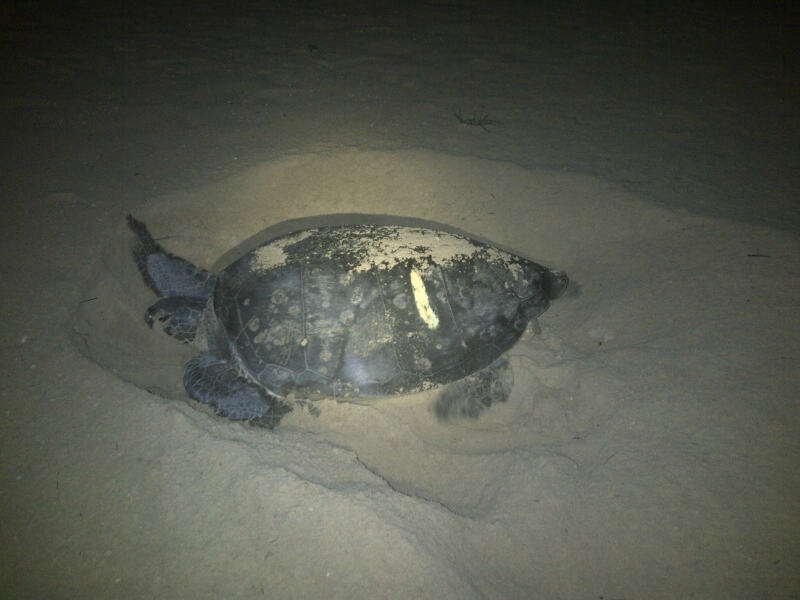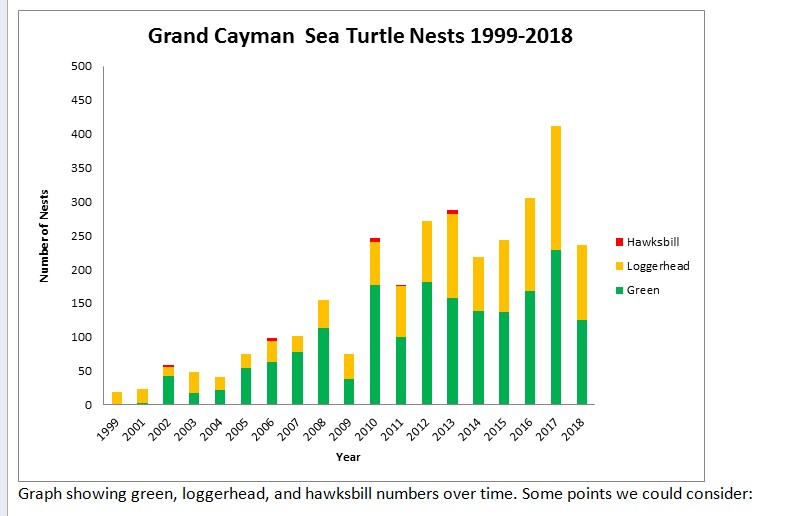Cayman Islands DOE Fact Sheet re turtle nesting and genetics

The Department of Environment (DoE) would like to thank all participants in the two-year Darwin Grant-funded study, including the University of Barcelona, the University of Exeter, the Cayman Turtle Centre and our volunteers and visiting scientists. For ease of reference, DoE is providing the following background facts and an accompanying chart reviewing turtle nesting numbers in the Cayman Islands during the past two decades.
Genetic results from the University of Barcelona, published in the journal Molecular Ecology, show that most of the adult female Green Sea turtles that have come back to nest more than 20 years after being born have a genetic (familial) connection to the Cayman Turtle Centre. The Centre’s turtle releases in the 1980s and early 1990s, combined with DoE’s ongoing sea turtle conservation/protection efforts on local beaches, succeeded in the reestablishment of nesting Green turtle species in the Cayman Islands.
The study data only apply to Green turtles.
DoE has been monitoring wild turtle nesting populations since 1998 in the sister islands and 1999 in Grand Cayman. In 2018, the DoE completed the 20th year of daytime nesting beach monitoring.
Green turtle nesting in Grand Cayman has increased in recent years, from one Green turtle nest in 1999 to a record of more than 200 Green turtle nests in 2017. The number of females in the nesting population was previously unknown, as each turtle can lay more than one nest per season.
DoE monitoring was expanded from 2013-2018 to include night-time tagging of nesting females and collection of genetic samples from the females. These efforts, funded by the Cayman Islands Governor’s Fund, the Darwin Initiative, and the DoE allowed us to estimate the number of nesting female turtles in the Grand Cayman turtle population and the contribution of farm-released turtles to the wild (via this study).
Between 2013 and 2018, DoE researchers spent hundreds of hours patrolling beaches at night, tagging nesting female Green turtles to assess population size and collecting small tissue samples for the genetic study on the origins of the wild turtle nesting population.
It is important to note that genetic study was not an evaluation of the current release programme. The adult female nesting turtles sampled in this study were more than 20 years old and therefore they were released in the 1980s and 1990s.
During the peak of its turtle releases in the 1980s and early 1990s, Cayman Turtle Farm (Centre) released nearly 30,000 captive raised hatching and yearling Green turtles which are now of breeding age.
The mass releases, in the 1980s and early 1990s, while successful, led to relatively low overall numbers of returning adult nesting female Green turtles. It is estimated that from these early releases, fewer than 150 adult female Green Sea turtles with genetic relation to the Cayman Turtle Centre survived to adulthood and joined the wild nesting population.
Loggerhead turtles were never farmed, but their numbers are also increasing through wild nesting, combined with protective efforts locally.
Protection from hunting and poaching and other factors has resulted in population increases for both species in the Cayman Islands, and these efforts as well as habitat protection are necessary to ensure the future of the nesting populations.
Protection in the wild is essential for all turtle species in Cayman to continue to survive and thrive. This includes continuing protection from threats of poaching, development and risks of misorientation by bright lights from beachfront hotels/condos. -30-






